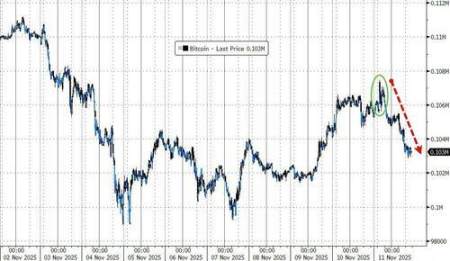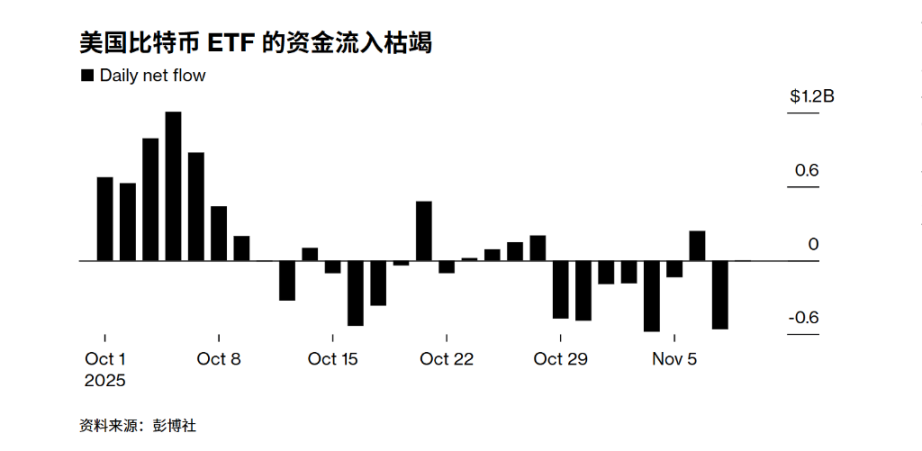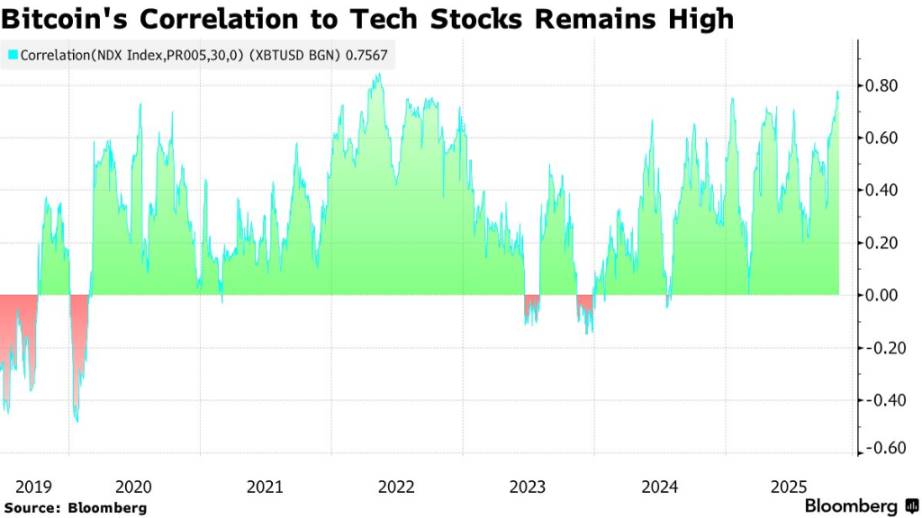Technical indicators show that it is still constrained by the 200-day moving average, and analysts have significant disagreements on whether the recent rebound is a "dead cat bounce" or a trend reversal, with market sentiment remaining fragile.
Written by: Ye Huiwen
Source: Wall Street Watch
After experiencing a sharp decline last month that saw its market value evaporate by hundreds of billions of dollars, Bitcoin is struggling to seek a rebound. However, the fragile market sentiment and ongoing selling pressure are making any recovery attempts difficult.
Although the positive news of Washington ending the government shutdown boosted traditional risk assets, the cryptocurrency market did not see the strong rally that was anticipated, highlighting the lingering unease among investors following substantial losses.
The world's largest cryptocurrency briefly broke through $107,000 on Monday but quickly fell back below $105,000. This weak price performance stands in stark contrast to the rising stock and credit markets due to the reopening of the U.S. government, indicating that the internal momentum of crypto assets remains insufficient.

According to Bloomberg, since the record liquidation triggered by Trump's unexpected tariff announcement on October 10, Bitcoin's market value has shrunk by approximately $340 billion. The market generally believes that the recent slump is partly due to early large holders (i.e., "OG whales") taking profits near the annual highs, while the shadow of the large-scale liquidation event in early October still lingers.

Signs of weakness are confirmed by several key indicators. Data measuring market sentiment and leverage levels show that investor enthusiasm has yet to recover. Meanwhile, key resistance levels on technical charts are also heavily suppressing prices, leading to divergent views among market participants regarding the outlook.
Key indicators show insufficient momentum
A series of data indicate that the momentum driving Bitcoin's rise has not yet returned. The total open interest in Bitcoin perpetual futures is currently about $68 billion, significantly lower than last month's peak of $94 billion, reflecting a notable cooling of speculative interest in the derivatives market. At the same time, the funding rate used to measure the cost of leveraged positions remains stable, indicating that traders are not actively leveraging long positions.

More concerning is the underwhelming performance of spot Bitcoin ETFs, which are an important source of new funds for the market. According to data compiled by Bloomberg, despite a broad rise in the U.S. stock market on Monday, Bitcoin ETFs listed in the U.S. only recorded a net inflow of $1 million that day. George Mandres, a senior trader at XBTO Trading, pointed out that the insufficient new funds represented by ETF inflows continue to affect market risk sentiment.

Technical resistance is heavy
From a technical perspective, Bitcoin's outlook also faces challenges. Currently, its price is still operating below the 200-day moving average (currently close to $110,000), which analysts generally view as a key threshold for any sustained upward trend.

Tony Sycamore, an analyst at IG Australia, stated that the price needs to consistently break above the 200-day moving average to "significantly increase confidence in the view that the upward trend has resumed." FxPro's chief market analyst Alex Kuptsikevich also noted that the broader cryptocurrency total market cap is encountering technical resistance at the 50-day moving average around $3.62 trillion. He believes the market may be forming a new, lower local high, continuing the downward trend that began over a month ago.
BTC Markets analyst Rachael Lucas added that $103,000 is a key structural support level. If this level is breached, it could open the door for prices to fall towards $86,000 or even deeper to $82,000 (in line with the 100-week moving average), and any behavior that breaks below these areas could reignite selling pressure.
Market views diverge: dead cat bounce or trend reversal?
There is a clear divergence in interpretations among market participants regarding Monday's brief rise. Some believe it is merely a temporary respite in a bear market, while others are looking for early signs of a trend reversal.
George Mandres bluntly stated that this rebound "feels like a dead cat bounce." He believes that sentiment in the cryptocurrency space is different from that in the stock market, with significant attention on the narrative surrounding early Bitcoin buyers selling large amounts of tokens, which is weakening risk appetite. Alex Kuptsikevich also noted that the market is clearly not ready to shift to a "wildly optimistic mode," as profit-taking continues after the growth impulse materializes.
However, some analysts hold a relatively positive view. Tony Sycamore pointed out that the most significant feature in the past 24 hours is that Bitcoin briefly tracked the rise of risk assets after experiencing a breakdown in correlation last month. He considers this a "positive sign" and technically analyzes that the correction from the $126,272 high may have completed at the recent low of $98,898.
Rachael Lucas described the recent rise as a "classic short squeeze rebound, mixed with some institutional FOMO (fear of missing out) sentiment." This view suggests that the current rise is more driven by structural market factors rather than a solid return of fundamental confidence.
免责声明:本文章仅代表作者个人观点,不代表本平台的立场和观点。本文章仅供信息分享,不构成对任何人的任何投资建议。用户与作者之间的任何争议,与本平台无关。如网页中刊载的文章或图片涉及侵权,请提供相关的权利证明和身份证明发送邮件到support@aicoin.com,本平台相关工作人员将会进行核查。




